




3Dprinting (185) A.I. (924) animation (355) blender (223) colour (241) commercials (53) composition (154) cool (375) design (660) Featured (94) hardware (319) IOS (109) jokes (141) lighting (301) modeling (160) music (189) photogrammetry (199) photography (757) production (1310) python (108) quotes (501) reference (318) software (1384) trailers (310) ves (578) VR (221)
POPULAR SEARCHES unreal | pipeline | virtual production | free | learn | photoshop | 360 | macro | google | nvidia | resolution | open source | hdri | real-time | photography basics | nuke
Year: 2019
-
Sean Carroll On Laplace’s Demon
Given a some level of omniscent entity or computer, future and past can be revealed at some level of probability.
-
The difference between eyes and cameras
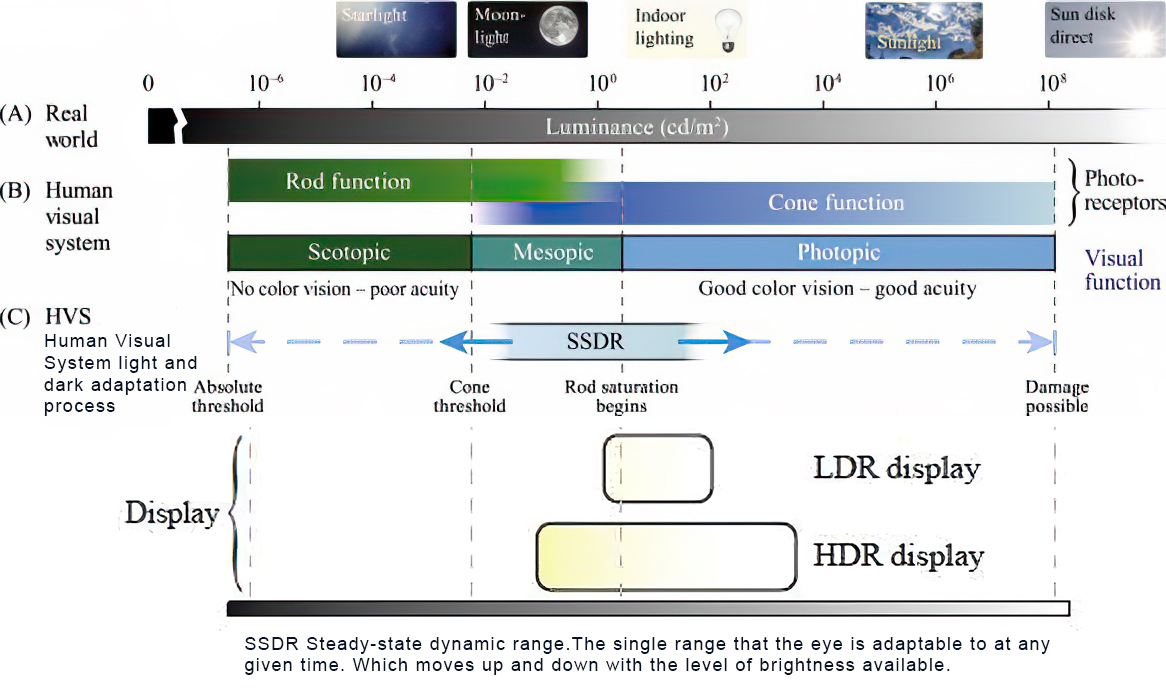
https://www.quora.com/What-is-the-comparison-between-the-human-eye-and-a-digital-camera
https://medium.com/hipster-color-science/a-beginners-guide-to-colorimetry-401f1830b65a
There are three types of cone photoreceptors in the eye, called Long, Medium and Short. These contribute to color discrimination. They are all sensitive to different, yet overlapping, wavelengths of light. They are commonly associated with the color they are most sensitive too, L = red, M = green, S = blue.
Different spectral distributions can stimulate the cones in the exact same way
A leaf and a green car that look the same to you, but physically have different reflectance properties. It turns out every color (or, unique cone output) can be created from many different spectral distributions. Color science starts to make a lot more sense when you understand this.When you view the charts overlaid, you can see that the spinach mostly reflects light outside of the eye’s visual range, and inside our range it mostly reflects light centered around our M cone.
This phenomenon is called metamerism and it has huge ramifications for color reproduction. It means we don’t need the original light to reproduce an observed color.
http://www.absoluteastronomy.com/topics/Adaptation_%28eye%29
The human eye can function from very dark to very bright levels of light; its sensing capabilities reach across nine orders of magnitude. This means that the brightest and the darkest light signal that the eye can sense are a factor of roughly 1,000,000,000 apart. However, in any given moment of time, the eye can only sense a contrast ratio of one thousand. What enables the wider reach is that the eye adapts its definition of what is black. The light level that is interpreted as “black” can be shifted across six orders of magnitude—a factor of one million.
https://clarkvision.com/articles/eye-resolution.html
The Human eye is able to function in bright sunlight and view faint starlight, a range of more than 100 million to one. The Blackwell (1946) data covered a brightness range of 10 million and did not include intensities brighter than about the full Moon. The full range of adaptability is on the order of a billion to 1. But this is like saying a camera can function over a similar range by adjusting the ISO gain, aperture and exposure time.
In any one view, the eye eye can see over a 10,000 range in contrast detection, but it depends on the scene brightness, with the range decreasing with lower contrast targets. The eye is a contrast detector, not an absolute detector like the sensor in a digital camera, thus the distinction. The range of the human eye is greater than any film or consumer digital camera.
As for DSLR cameras’ contrast ratio ranges in 2048:1.
(Daniel Frank) Several key differences stand out for me (among many):
- The area devoted to seeing detail in the eye — the fovea — is extremely small compared to a digital camera sensor. It covers a roughly circular area of only about three degrees of arc. By contrast, a “normal” 50mm lens (so called because it supposedly mimic the perspective of the human eye) covers roughly 40 degrees of arc. Because of this extremely narrow field of view, the eye is constantly making small movements (“saccades”) to scan more of the field, and the brain is building up the illusion of a wider, detailed picture.
- The eye has two different main types of light detecting elements: rods and cones. Rods are more sensitive, and detect only variations in brightness, but not color. Cones sense color, but only work in brighter light. That’s why very dim scenes look desaturated, in shades of gray, to the human eye. If you take a picture in moonlight with a very high-ISO digital camera, you’ll be struck by how saturated the colors are in that picture — it looks like daylight. We think of this difference in color intensity as being inherent in dark scenes, but that’s not true — it’s actually the limitation of the cones in our eyes.
- There are specific cones in the eye with stronger responses to the different wavelengths corresponding to red, green, and blue light. By contrast, the CCD or CMOS sensor in a color digital camera can only sense luminance differences: it just counts photons in tens of millions of tiny photodetectors (“wells”) spread across its surface. In front of this detector is an array of microscopic red, blue, and green filters, one per well. The processing engine in the camera interpolates the luminance of adjacent red-, green-, or blue-filtered detectors based on a so-called “demosaicing” algorithm. This bears no resemblance to how the eye detects color. (The so-called “foveon” sensor sold by Sigma in some of its cameras avoid demosaicing by layering different color-sensing layers, but this still isn’t how the eye works.)
- The files output by color digital cameras contain three channels of luminance data: red, green, and blue. While the human eye has red, green, and blue-sensing cones, those cones are cross-wired in the retina to produce a luminance channel plus a red-green and a blue-yellow channel, and it’s data in that color space (known technically as “LAB”) that goes to the brain. That’s why we can’t perceive a reddish-green or a yellowish-blue, whereas such colors can be represented in the RGB color space used by digital cameras.
- The retina is much larger than the fovea, but the light-sensitive areas outside the fovea, and the nuclei to which they wire in the brain, are highly sensitive to motion, particularly in the periphery of our vision. The human visual system — including the eye — is highly adapted to detecting and analyzing potential threats coming at us from outside our central vision, and priming the brain and body to respond. These functions and systems have no analogue in any digital camera system.
-
Dinosaurs size comparison charts
Comparing the Sizes of Dinosaurs in the Lost World
https://www.visualcapitalist.com/cp/comparing-the-sizes-of-dinosaurs-in-the-lost-world/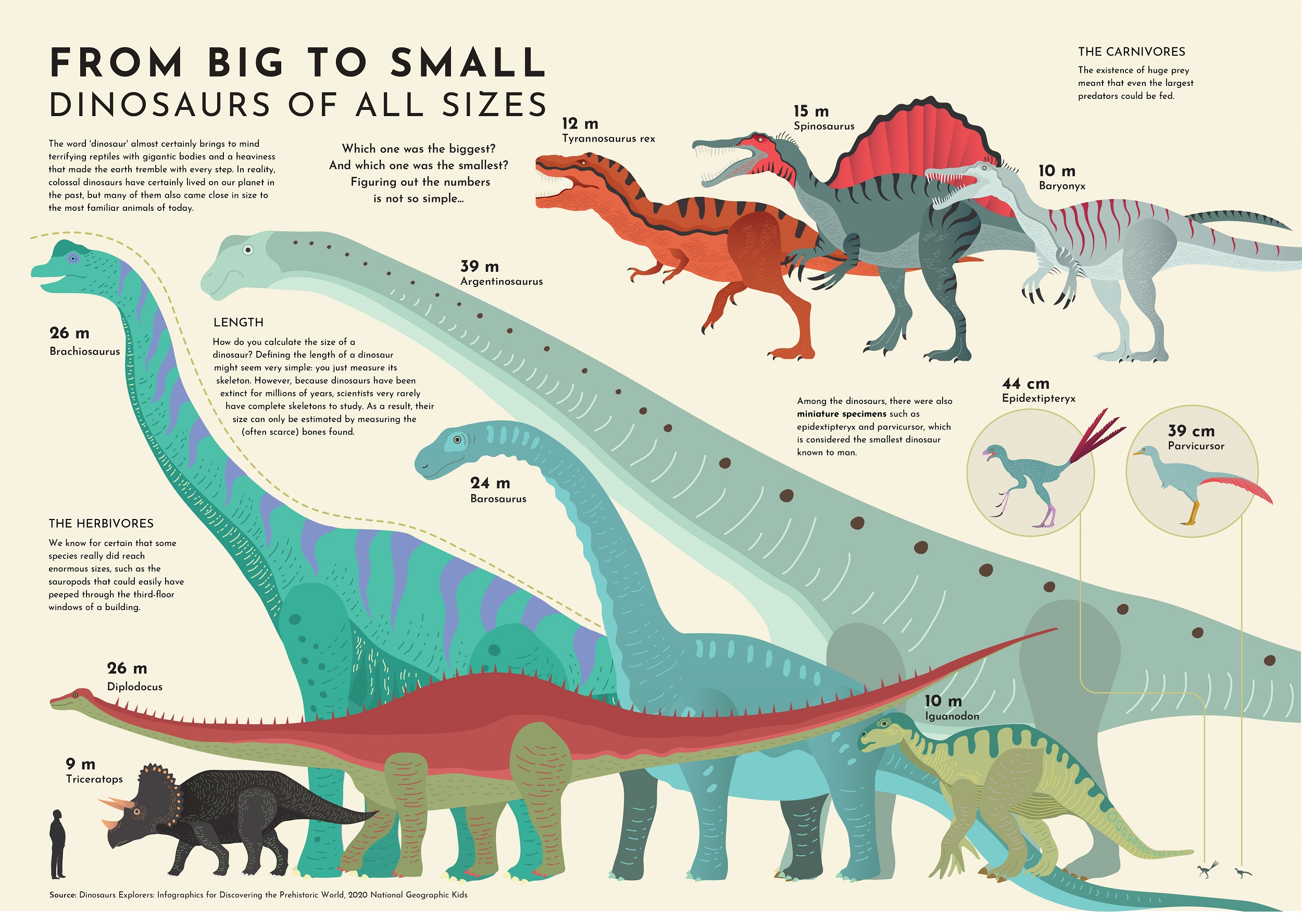
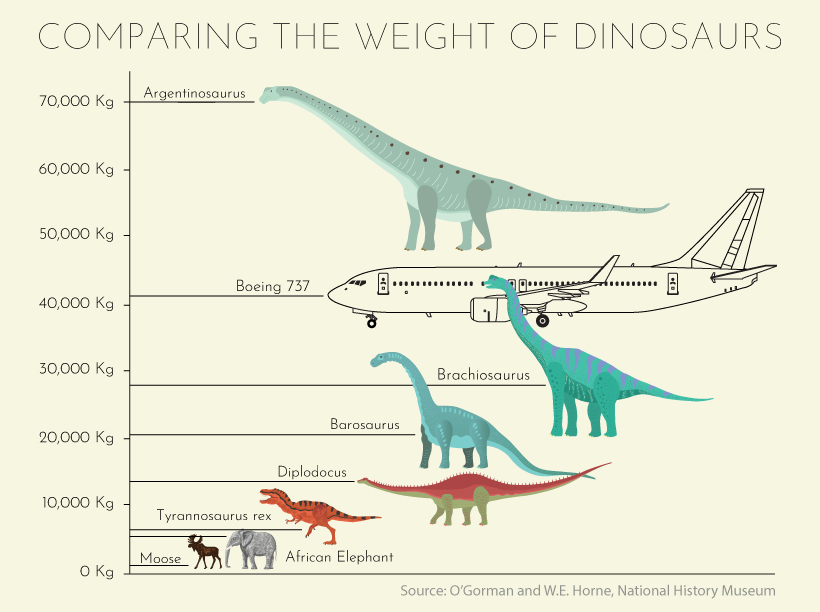
https://commons.wikimedia.org/wiki/File:Cedar_Mountain_Formation_Yellow_Cat_Fauna.png

https://www.deviantart.com/franoys/art/Jurassic-World-Evolution-Dinosaurs-chart-763436247
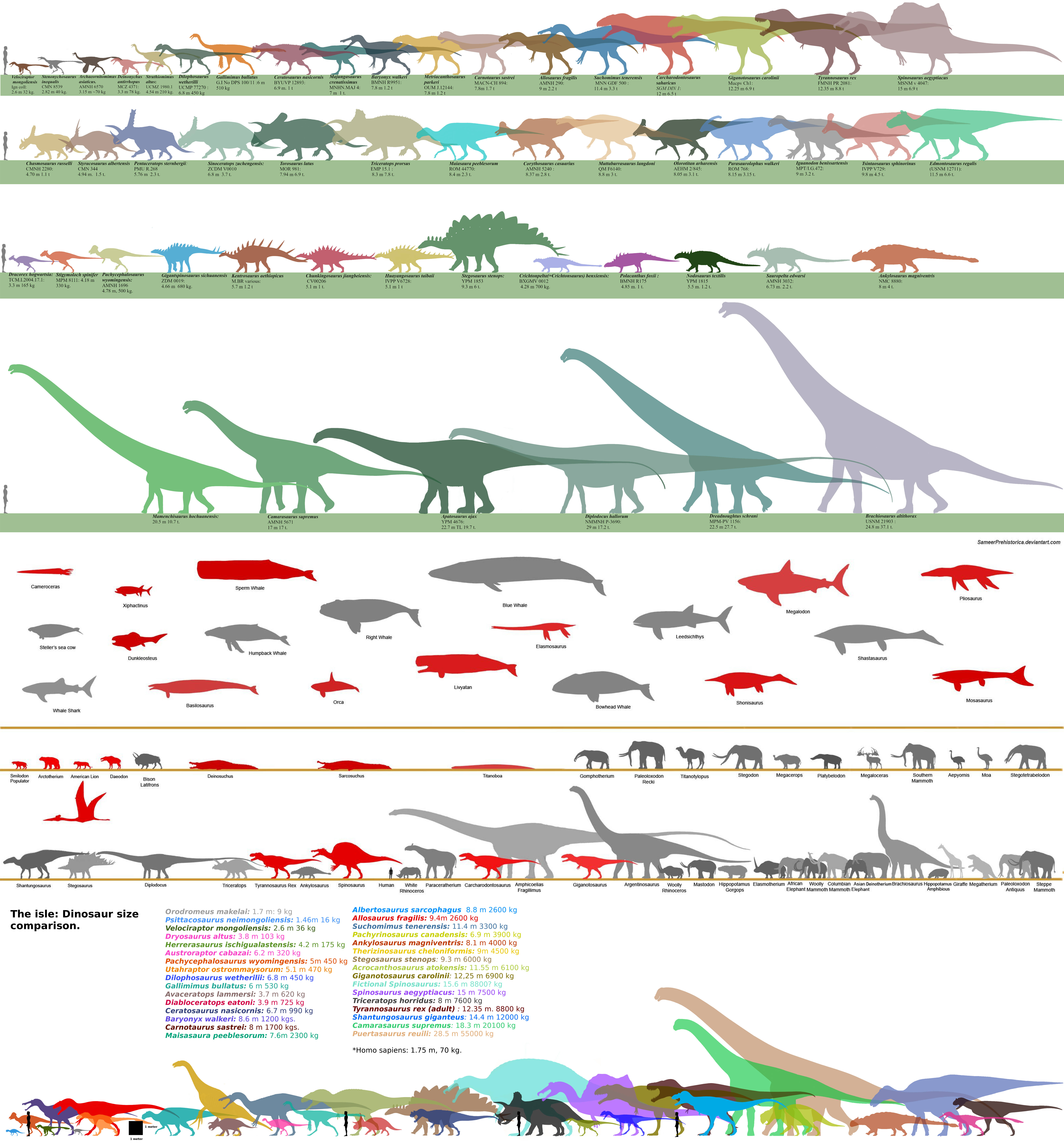
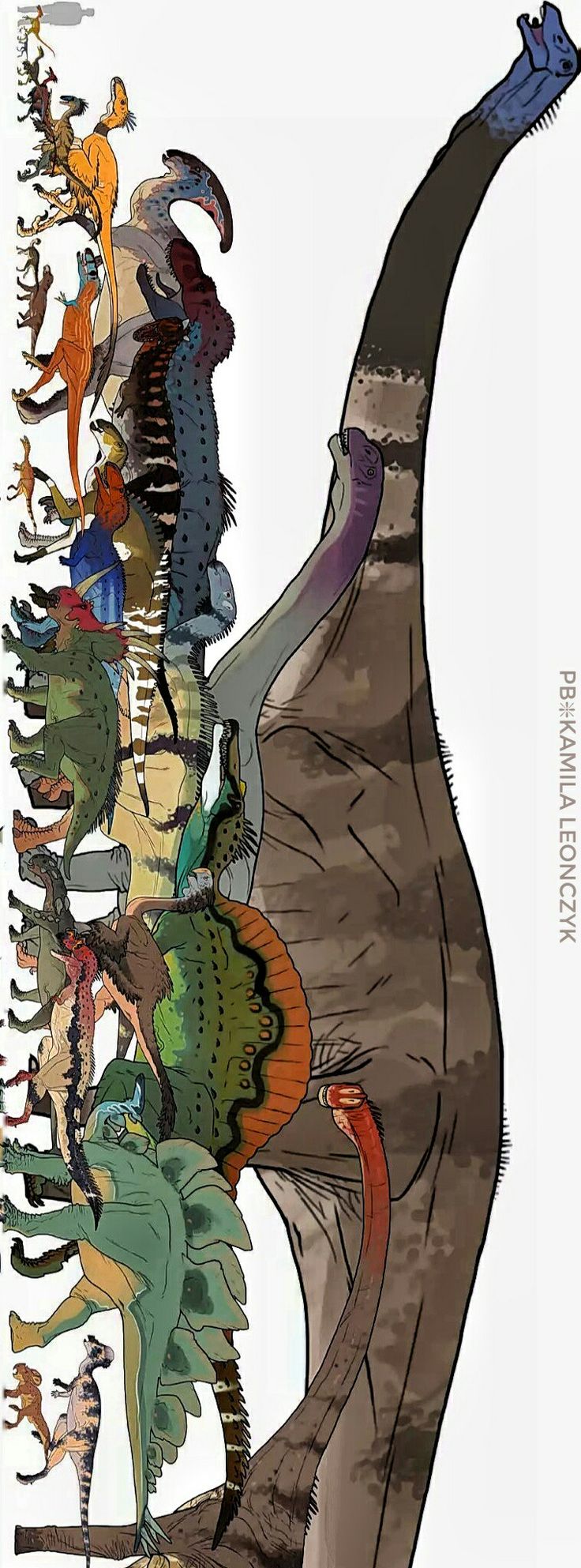

-
Scorsese’s New Mob Epic, ‘The Irishman,’ Has Netflix and Theaters Distributors at Odds – The online feature streaming battle
www.nytimes.com/2019/08/21/business/media/netflix-scorsese-the-irishman.html
When Martin Scorsese signed with Netflix to make “The Irishman,” the star-studded epic scheduled to have its premiere on the opening night of the New York Film Festival next month, he put himself in the crossfire of the so-called streaming wars.
A crucial sticking point has been the major chains’ insistence that the films they book must play in their theaters for close to three months while not being made available for streaming at the same time, which does not sit well with Netflix.
More than 95 percent of movies stop earning their keep in theaters at the 42-day mark, well short of the three-month window demanded by major chains, according to Mr. Aronson. That suggests the need for change, he said.
Having built itself into an entertainment powerhouse by keeping its subscribers interested and coming back for more, Netflix does not want to be distracted by the demands of the old-style movie business, even as it makes deals with legendary filmmakers like Mr. Scorsese.
Oscar eligibility is not much of a factor in how Netflix handles the rollout. To qualify for the Academy Awards, a film must have a seven-day run in a commercial theater in Los Angeles County, according to rules recently confirmed by the Academy of Motion Picture Arts and Sciences’ board of governors; it can even be shown on another platform at the same time. Still, there is an Academy contingent that may look askance at Netflix if it does not play by the old rules for a cinematic feature like “The Irishman.”
-
7 Commandments of Film Editing and composition
1. Watch every frame of raw footage twice. On the second time, take notes. If you don’t do this and try to start developing a scene premature, then it’s a big disservice to yourself and to the director, actors and production crew.
2. Nurture the relationships with the director. You are the secondary person in the relationship. Be calm and continually offer solutions. Get the main intention of the film as soon as possible from the director.
3. Organize your media so that you can find any shot instantly.
4. Factor in extra time for renders, exports, errors and crashes.
5. Attempt edits and ideas that shouldn’t work. It just might work. Until you do it and watch it, you won’t know. Don’t rule out ideas just because they don’t make sense in your mind.
6. Spend more time on your audio. It’s the glue of your edit. AUDIO SAVES EVERYTHING. Create fluid and seamless audio under your video.
7. Make cuts for the scene, but always in context for the whole film. Have a macro and a micro view at all times.
-
Impostor Syndrome – the barrier between artists and success
Do any of these apply to you:
- I find it hard to accept praise.
- I tend to focus on the things I am not good at, rather than my strenghts.
- I think that people over rate me and worry one day they will find out that I am not as good as they think I am.
- I often succeed despite being convinced I will fail before I begin.
- I often think that those around me are better.
- I hate asking for feedback on my performance.
www.jessstuart.co.nz/imposter-syndrome
Impostor syndrome is a psychological pattern in which an individual doubts their accomplishments and has a persistent internalized fear of being exposed as a “fraud”, against all evidence.
70% of people suffer from some level of imposter syndrome.
Those experiencing this phenomenon remain convinced that they are frauds, and do not deserve all they have achieved.
Individuals with impostorism incorrectly attribute their success to luck, or as a result of deceiving others into thinking they are more intelligent than they perceive themselves to be.
What can you do about it:
www.jessstuart.co.nz/blog/2018/05/6-hacks-handle-imposter-syndrome- Don’t over complicate things.
- Own your successes.
- Give it your all and know it’s enough.
- Don’t let your doubt and fear stop you.
- Remember: your thoughts are not common knowledge.
- Acknowledge it and know it’s not just you.
- Stop comparing yourself to others.
en.wikipedia.org/wiki/Impostor_syndrome
-
No one could see the colour blue until modern times
https://www.businessinsider.com/what-is-blue-and-how-do-we-see-color-2015-2

The way humans see the world… until we have a way to describe something, even something so fundamental as a colour, we may not even notice that something it’s there.
Ancient languages didn’t have a word for blue — not Greek, not Chinese, not Japanese, not Hebrew, not Icelandic cultures. And without a word for the colour, there’s evidence that they may not have seen it at all.
https://www.wnycstudios.org/story/211119-colorsEvery language first had a word for black and for white, or dark and light. The next word for a colour to come into existence — in every language studied around the world — was red, the colour of blood and wine.
After red, historically, yellow appears, and later, green (though in a couple of languages, yellow and green switch places). The last of these colours to appear in every language is blue.The only ancient culture to develop a word for blue was the Egyptians — and as it happens, they were also the only culture that had a way to produce a blue dye.
https://mymodernmet.com/shades-of-blue-color-history/True blue hues are rare in the natural world because synthesizing pigments that absorb longer-wavelength light (reds and yellows) while reflecting shorter-wavelength blue light requires exceptionally elaborate molecular structures—biochemical feats that most plants and animals simply don’t undertake.
When you gaze at a blueberry’s deep blue surface, you’re actually seeing structural coloration rather than a true blue pigment. A fine, waxy bloom on the berry’s skin contains nanostructures that preferentially scatter blue and violet light, giving the fruit its signature blue sheen even though its inherent pigment is reddish.
Similarly, many of nature’s most striking blues—like those of blue jays and morpho butterflies—arise not from blue pigments but from microscopic architectures in feathers or wing scales. These tiny ridges and air pockets manipulate incoming light so that blue wavelengths emerge most prominently, creating vivid, angle-dependent colors through scattering rather than pigment alone.
(more…)
COLLECTIONS
| Featured AI
| Design And Composition
| Explore posts
POPULAR SEARCHES
unreal | pipeline | virtual production | free | learn | photoshop | 360 | macro | google | nvidia | resolution | open source | hdri | real-time | photography basics | nuke
FEATURED POSTS
-
PixelSham – Introduction to Python 2022
-
Black Body color aka the Planckian Locus curve for white point eye perception
-
Mastering The Art Of Photography – PixelSham.com Photography Basics
-
Survivorship Bias: The error resulting from systematically focusing on successes and ignoring failures. How a young statistician saved his planes during WW2.
-
Types of AI Explained in a few Minutes – AI Glossary
-
Zibra.AI – Real-Time Volumetric Effects in Virtual Production. Now free for Indies!
-
Animation/VFX/Game Industry JOB POSTINGS by Chris Mayne
-
copypastecharacter.com – alphabets, special characters, alt codes and symbols library
Social Links
DISCLAIMER – Links and images on this website may be protected by the respective owners’ copyright. All data submitted by users through this site shall be treated as freely available to share.
